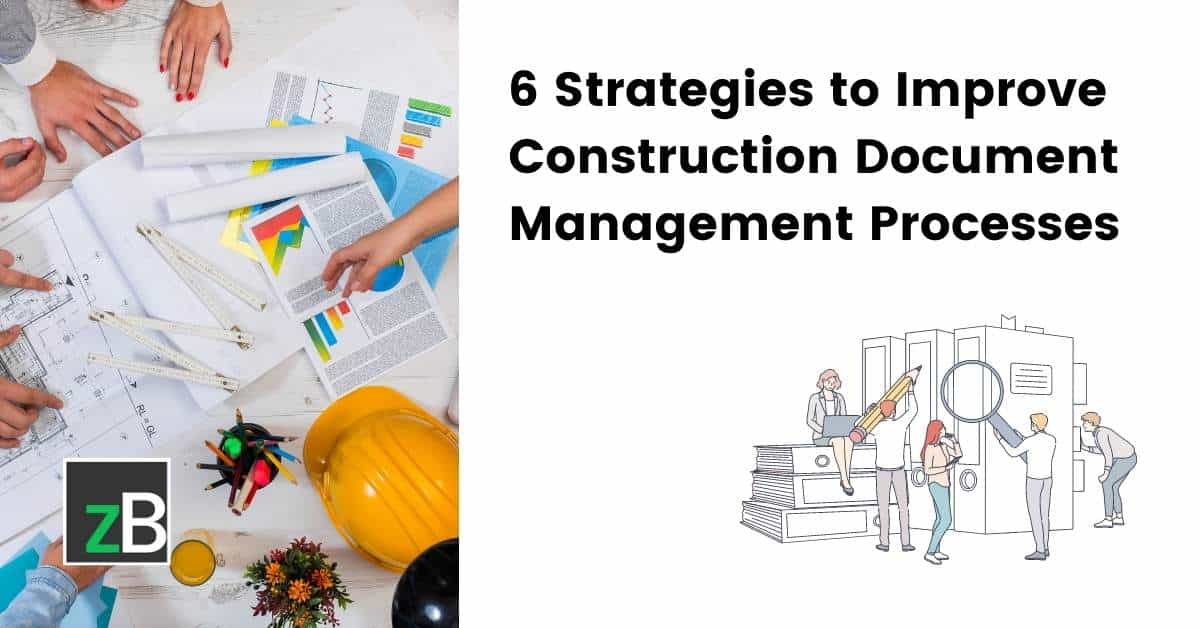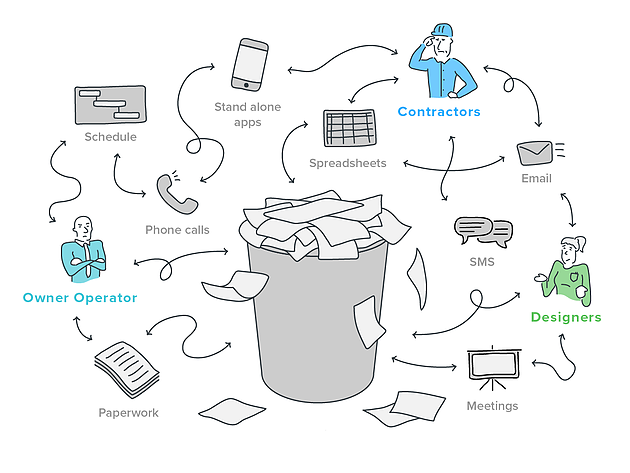Structure Better Projects: The Duty of Construction Document Management in Success
Structure Better Projects: The Duty of Construction Document Management in Success
Blog Article
Enhancing Process Effectiveness: Engineer's Professional Approaches for Building And Construction Paper Administration
In the realm of architectural design and building and construction, the meticulous administration of documents stands as a keystone for job success. These techniques not just make sure smooth job progression but additionally hold the crucial to unlocking improved efficiency and precision in the complex world of building paper administration.
Key Document Organization Techniques
When managing construction records, among the crucial methods that architects utilize is establishing a systematic and effective company system. This system normally involves classifying records based on their type, such as drawings, requirements, contracts, and permits. By creating distinct and clear classifications, designers can quickly find certain information when required, conserving time and lessening mistakes in the building and construction procedure.
Within each group, architects better arrange papers by creating subfolders or utilizing numbering systems to represent variations or modifications (construction document management). This ordered framework makes certain that one of the most present and relevant details is conveniently available while preserving a record of changes made throughout the project timeline
Moreover, designers commonly use digital file management platforms that offer attributes like keyword search functions, version control, and access restrictions to improve company and partnership amongst project stakeholders. These tools improve the document access procedure, advertise real-time updates, and help with seamless communication, ultimately adding to the total success of the building job.
Collaborative Platform Combination
To optimize paper monitoring effectiveness in building tasks, designers effortlessly integrate joint platforms to boost interaction and enhance coordination amongst project stakeholders. By leveraging collective platforms such as job monitoring software application, cloud-based storage space systems, and communication tools, designers can create a centralized hub for all project-related documents and interaction channels. These systems allow employee to gain access to, evaluation, and work together on records in real-time, decreasing hold-ups and the risk of mistakes connected with conventional document monitoring techniques.
Collective system integration also cultivates transparency and liability within the project group, as all stakeholders have visibility right into the current task updates and revisions. By systematizing interaction and document sharing, architects can guarantee that all employee are functioning from one of the most current details, minimizing the possibilities of misunderstandings or problems arising as a result of outdated documents.
In addition, joint systems make it possible for smooth cooperation in between architects, service providers, clients, and other job stakeholders, promoting a much more natural and effective task process. By breaking down communication obstacles and assisting in details exchange, architects can drive productivity and innovation in building and construction projects, eventually resulting in successful job outcomes.
Version Control Ideal Practices
Carrying out efficient version control practices is critical for maintaining document accuracy and consistency in construction tasks. By establishing a clear system for handling revisions, job groups can ensure that everyone is functioning from the most updated documents, lowering the threat of mistakes and disparities during the building and construction phase.
Among the vital best practices for visit this website version control is to designate special identifiers to each record variation. This can be achieved by utilizing a numbering system or day stamp that clearly suggests the order of revisions. By plainly identifying each version, staff member can quickly track the development of the file and identify the most current version.

Automation Tools for Performance

File control software, like Procore or PlanGrid, centralizes project documentation, making it conveniently available to all stakeholders. These platforms enable real-time partnership, version control, and automated backups, safeguarding against data loss. Additionally, Structure Info Modeling (BIM) software automates the generation of building and construction illustrations and makes sure that changes are synchronized throughout all related documents.
Incorporating automation devices with cloud storage options additionally improves availability and security. By automating the paper monitoring procedure, task pop over here teams can focus their effort and time on value-adding activities, inevitably boosting efficiency and job results.
Secure Information Monitoring Solutions
Successfully protecting and taking care of task data is vital in the building and construction sector to make sure privacy and integrity throughout the job lifecycle. Building firms can make use of encrypted cloud storage space services go to these guys to safely save and share job papers with licensed employees.
Furthermore, using electronic legal rights management (DRM) devices includes an extra layer of protection by protecting against the unapproved circulation or duplication of project papers. Normal data backups are necessary to alleviate the threat of data loss because of unpredicted circumstances like equipment failings or cyber-attacks. Collaborative systems with built-in safety attributes enable seamless communication and documents sharing among job employee while preserving data honesty.
Verdict
Finally, implementing crucial document organization strategies, incorporating collaborative platforms, exercising variation control finest practices, utilizing automation tools, and taking on protected data management services are crucial techniques for enhancing operations efficiency in construction file administration. These professional methods can streamline procedures, improve communication, ensure precision, and preserve data safety and security throughout the building task lifecycle.
In the world of building design and building and construction, the meticulous monitoring of records stands as a foundation for task success. These approaches not just ensure smooth task development however also hold the essential to opening enhanced efficiency and accuracy in the complex realm of building and construction paper monitoring.
To optimize record monitoring efficiency in construction jobs, designers seamlessly integrate collective systems to boost interaction and streamline coordination amongst task stakeholders. These platforms allow group participants to gain access to, testimonial, and collaborate on papers in real-time, minimizing delays and the risk of errors connected with traditional paper management methods.
Using automation tools in building paper management substantially improves effectiveness and improves procedures for task groups. construction document management.
Report this page